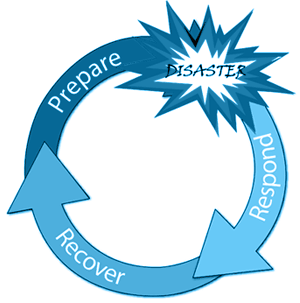Disaster recovery
Data recovery is a security strategy that majorly entails protecting an organization against the effects of diverse negative events that make the normal functionality of the organization impossible. Moreover, these events, to great extents subjects the operations of the organization to dangerous risks. Some of these negative events may include: equipment failure, crippling cyberattacks, earthquakes, hurricanes and other natural disasters.

Almost, if not all large-scale businesses across the world increasing rely on IT provide Baltimore for their mission-critical operation on a daily basis. For that reason, it is very important for them to put in place plans that would ensure the business viability is not at risk from critical incidences. On that note, the following are types of disaster recovery techniques that are practiced all over the world.
No disaster plan at all: It entails businesses in having no disaster recovery plan in place. Supposing a disaster happens, confusion and panic tends to be the accompanying effects which results in a no timely recovery of data, hardware and software of the business.
No disaster plan, but good backup procedures: Involves businesses backing up information of the business on a daily basis, and storing the backup offsite at a secure archival company and not at the employee’s home.
A disaster plan with no resource in place: it is a remote disaster recovery strategy that involves putting in place solutions to probable disasters.
A “cold site” disaster recovery solution: involves reserving an area on data Centre where the organization can setup new equipment in the event of disaster.
A “split site” disaster recovery: involves housing the IT department in more than one location in that if an event of disaster happens on one site, the operation can be shifted to the other.
A “hot site” disaster recovery solution: Involves duplicating and maintaining at a separate data center of the business IT systems and up-to-date data.
What level of practice is right for you? Involves analysis of the business systems, data and requirements and developing adequate solutions that cost effectively meet the present and future needs required.
Ways of reducing the cost and complexity of a disaster.
- When there is a better planning, definitely there will be an efficient and appropriate execution.
- It is advisable to exclude unused Licenses from maintenance
- Engaging in professional upgrades.
- Always try to reduce the hardware and software updates with the cloud.
- Reducing the need to deal with systems performance issues with a managed service provider.
Recovery solutions that exist.
Remote mirroring: This type of solution produces a mirrored image of the existent data on two or more disks.
Data replication: Scans data timely for changes and gets a copy of a new data to the other disk or file system.
Disk-to-disk remote copy: copies data remotely from one disk to another.
Database replication: this one basically involves the mirroring of log files.
The snapshots (hot shot of back)-identifies storage and runs operations against it.
Virtualization- involves data replication and snapshot.
Block and file replication: makes comparison and only copies the changes that have been detected.